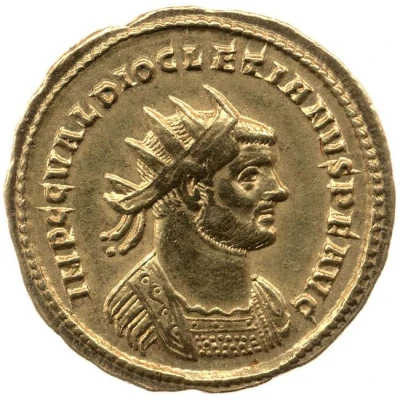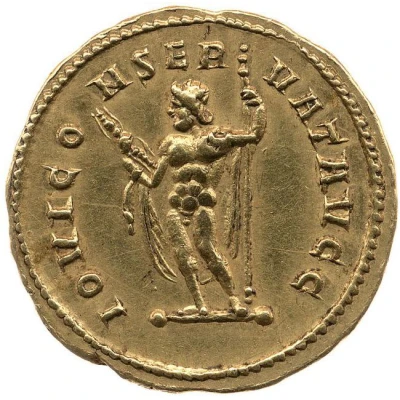


© Trustees of the British Museum
Aureus - Diocletianus IOVI CONSERVAT AVGG; Jupiter
| Gold | 5.6 g | - |
| Issuer | Rome › Roman Empire (27 BC - 395 AD) |
|---|---|
| Emperor | Diocletian (Gaius Aurelius Valerius Diocletianus) (284-305) Maximian Herculius (Marcus Aurelius Valerius Maximianus) (286-305) |
| Type | Standard circulation coin |
| Years | 284-294 |
| Value | Aureus (25⁄2) |
| Currency | Antoninianus, Reform of Caracalla (AD 215 – 301) |
| Composition | Gold |
| Weight | 5.6 g |
| Shape | Round (irregular) |
| Technique | Hammered |
| Demonetized | Yes |
| Updated | 2024-10-05 |
| Numista | N#305812 |
|---|---|
| Rarity index | 100% |
Reverse
Jupiter, standing left, holding thunderbolt in right hand and sceptre in left hand.
Script: Latin
Lettering: IOVI CONSERVAT AVGG
Translation:
Iovi Conservatori Duorum Augustorum.
To Jupiter, protector of the two emperors (Augusti).
Comment
Example of this type:Trustees of the British Museum
Source:
Online Coins of the Roman Empire (OCRE)
Interesting fact
One interesting fact about the Aureus - Diocletianus (IOVI CONSERVAT AVGG; Jupiter) coin is that it was issued during a time of significant economic and political change in the Roman Empire. The coin was minted during the reign of Diocletian, who introduced a number of economic reforms in an attempt to stabilize the empire's economy and address issues such as inflation and debasement of the currency. The coin's design, featuring Jupiter on the reverse, may have been intended to convey the idea of the emperor's divine authority and connection to the gods. Despite these efforts, the Roman Empire continued to decline and eventually collapsed in the 5th century AD.